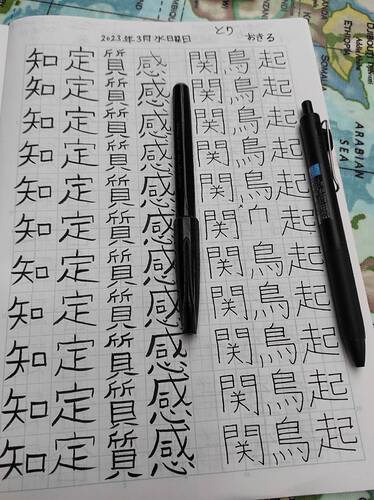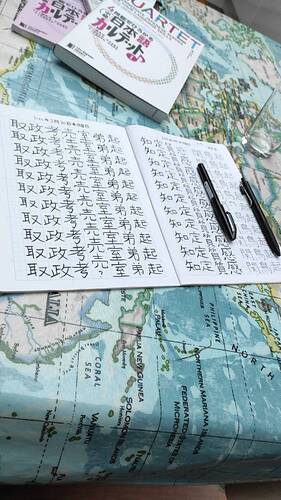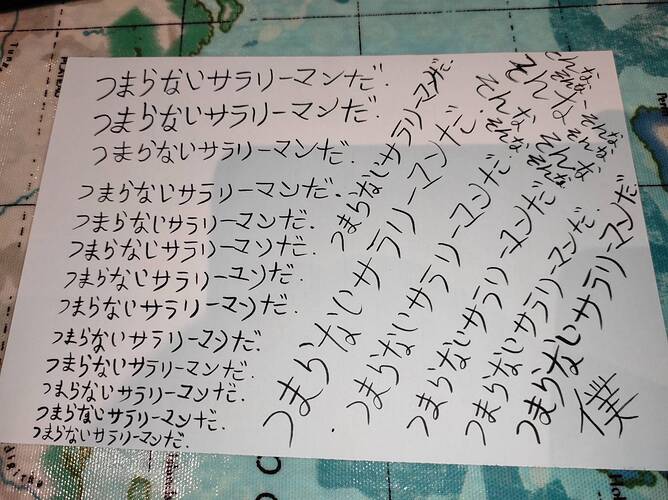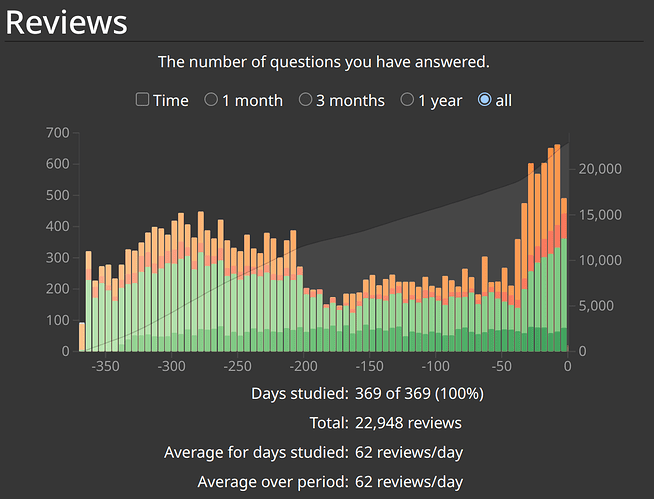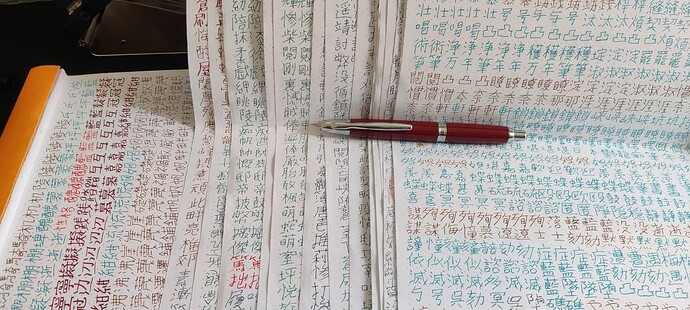@jrmr50, glad you found a method that works for you 
I guess I’ll give an update myself, in my writing deck I’m at around 1300 or ~59% of the Jouyou kanji. Definitely noticing more kick back failures on the later SRS levels at this point. Last few weeks the review piles have been getting higher but trying to keep 3 lessons a day to finish the deck this year if possible, if not I may need to slow down. On a brighter note, reading hand written holiday cards felt easier than years prior, some nice real life progress. And I think reading speed has improved as well, I think the writing exercises has been the credit to that. Most everything in the first 1000 ~N2 realm seem relatively straight forward using meanings along with readings as the front to write out the kanji, probably because of pure frequency in reading of most frequent, but after a 1000 it feel more challenging.
Like everything else I’ve encountered w/ language learning, the methods have to evolve to suit the content and phase. Particularly content and context need to have more relevance. For instance, testing a kanji like 弥 with meaning alone has very little relevance unless you have a vocab like 弥生 that has some reading frequency to make useful. Nanori readings is another example. And many times even vocab has very relevance alone in SRS too unless having exercising it in context, a prime example of SRS leech building. So I’ve supplementing my writing deck with the Jouyou Kanji Writing deck and converted it so use the Mazec keyboard for writing output. It’s a different testing method, instead of a full meaning/reading, it’s just using the reading/audio in a particular sentence to populate the vocab word via writing; I think this will provide a bit more rounded writing testing method and helps with some boredom burn out and provide context to the writing as I do both in tandem. Also my readings have been getting sloppy on some kanji, so I will run another supplementary reading/mean deck just a brush up a bit on certain kanji as well…will see how it goes.


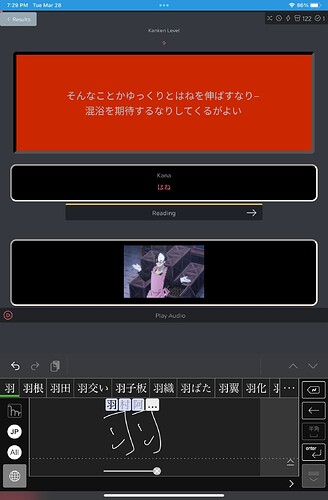
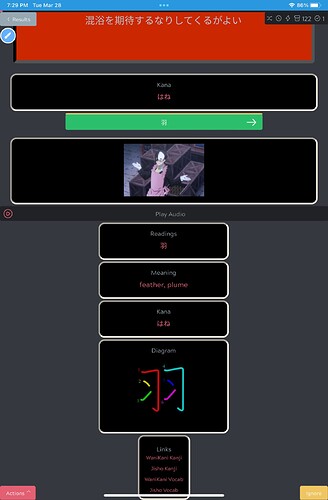
 but loving it
but loving it